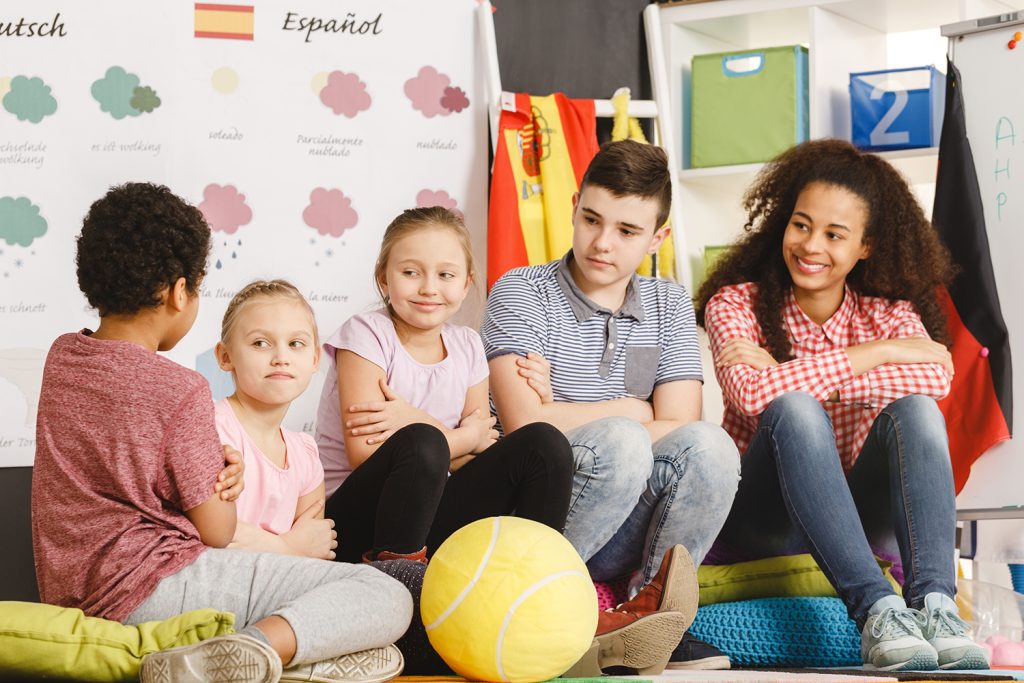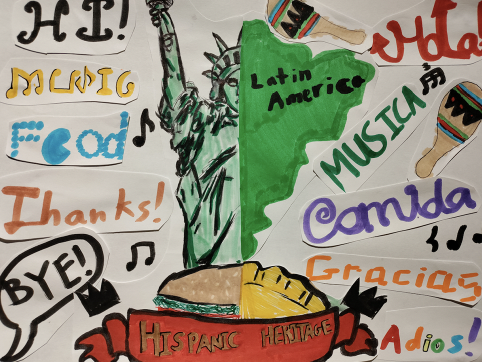

In recent years, a number of states have promoted the creation of pathways to make it easier for secondary students to matriculate into postsecondary institutions. Educational leaders see these pathways as a means to provide more access and opportunities to students, as well as mitigate issues associated with declining college enrollments and funding.
At the same time, according to the data collected by the National Center for Educational Statistics (NCES), language programs in postsecondary institutions are experiencing their own challenges, evident in a decline of more than 10% in enrollments and students majoring in a language. To some, pathways for language students can be seen as a threat to the traditional matriculation of students into their lower-level courses. However, language programs can leverage the proficiency of entering students not only to sustain their programs but also to expand their current offerings.
Seals of Biliteracy Lay the Foundation for Pathway Programs
The State Seals of Biliteracy were created for graduating high school students to demonstrate their biliteracy skills and bridge the gap between K–12 and higher ed. Hundreds of thousands of students have earned state seals.
In California, the San Bernardino County Schools offer Avant Assessment’s STAMP tests for districts to deliver in October to qualify students for the State Seal of Biliteracy, which allows students to include their seals on their college applications.
Each state has different requirements for earning the State Seal of Biliteracy, which creates a challenge for universities to evaluate what each seal means for advanced placement or credit.
It is also becoming more common to award students both the State Seal and the Global Seal of Biliteracy. The Global Seal can supplement the critical state government recognition of language skills with a uniform standard, making it easier for higher ed to evaluate incoming students’ levels of proficiency.
Bridge Programs
The Bridge Program for Advanced Language Learning in Utah builds a pathway for dual language immersion (DLI) students from elementary through to university. In this program, a university professor teaches upper-division language courses in high schools alongside the high school teacher. This way, after DLI students pass the AP test as nineth graders, they can take three upper-division courses and graduate with a nearly complete minor in the language. The Bridge Program is available to anyone who has passed the AP test (DLI, SHL, or secondary world language students) and allows universities to attract more students to their language programs and for students to be rewarded for their proficiency.
Five Steps to Expanding and Accelerating Programs Using Assessment
A recent approach to expanding enrollments and accelerating language programs is gaining traction in many universities.
- Step 1: Use external tests to assess students at the end of each sequence to create baselines at each level.
- Step 2: Using test results, set proficiency goals for each level within the program.
- Step 3: The goals set in step two define pathways for students to visualize their paths and what they can achieve by remaining in the program.
- Step 4: Once pathways are defined, they can be promoted with K–12 programs to recruit graduating high school students.
- Step 5: Credential students at various points with the Global Seal of Biliteracy (intermediate-mid, advanced-low, and advanced-high) and the Global Seal Pathway Awards (novice-mid, novice-high, and intermediate-low) to create more incentives for them to stay in the language program and increase enrollment.
University administrators are already seeking ways to increase enrollments and improve retention, so they have welcomed these steps once they have seen the data that support them. The Department of Modern Languages at the University of Texas at Arlington provides a great example of a group of dedicated leaders who worked together to develop pathways in their language program. On the initiative of Dr. Iya Price, departmental faculty collaborated with both university and local school district leadership to institute this program.
UTA’s Modern Languages Department has clearly identified the expected proficiency level for each sequence and students’ goals. Incoming students can submit either their STAMP scores from high school testing or their Global Seals of Biliteracy to receive up to 14 credit hours in Arabic, Chinese, French, German, Korean, Russian, or Spanish. To obtain these credits, students must enroll in one language course, pass it, and then receive retroactive credit for any courses skipped. Students entering with intermediate-mid to intermediate-high levels need only three additional language courses to obtain a minor.
UTA awards students the Global Seal of Biliteracy when they obtain intermediate-mid, advanced-low, and advanced-high levels of proficiency. By building these pathways, students can add a language minor or major while completing a degree in any other field.
Language pathways take buy-in from a number of stakeholders in order to be both wide reaching and successful. The benefits to all of the stakeholders involved far outweigh the challenges.
Roger Burt, MA, is a former high school Spanish teacher in Davis School District (Utah), where he served his district as lead AP teacher, first-year mentor teacher, curriculum team leader, and assessment team leader. Roger earned both his bachelor’s and master’s degrees in Spanish teaching from Weber State and Southern Oregon University, respectively. He lived in Mexico for two years developing a love for the people and culture, and later did his master’s coursework there.
Nick Gossett, PhD, is the higher education specialist for Avant Assessment. He has over a decade of experience in the field of language assessment and spent nearly two decades working in higher education. Currently, he works with language programs to help them institute the best practices in language assessment.















